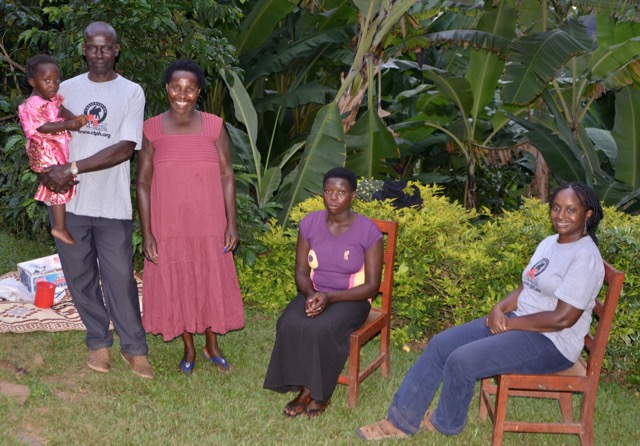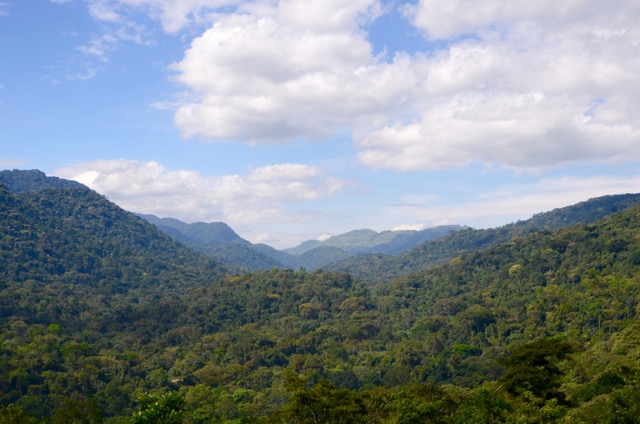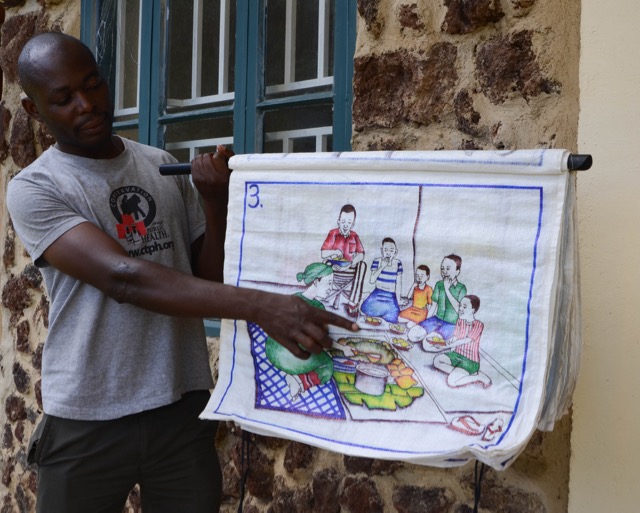The Connection Between Endangered Species and Family Planning
Jun 5th, 2017 | By admin | Category: Environment/SustainabilityBy Suzanne York.
A visit to southwestern Uganda makes it clear why Churchill deemed it the “pearl of Africa.” The lush greenery, the people, the animals all make it a delightful experience.
Bwindi Impenetrable National Park in southwestern Uganda is aptly named – the forest is thick as far as the eye can see, and the terrain mountainous. But even though “impenetrable,” humans have still conquered parts of it. Forests are cut down for farming and firewood – especially charcoal. Animals are hunted for food, some poached for profit. And wildlife and human conflicts bring disease transmission between people and gorillas. Much of this is driven by poverty, by people simply trying to care for their families.
This poverty is driving much of the high rates of deforestation in Uganda. Nearly 6,000 hectares of forest are lost every month (over 14,000 acres). There are predictions that Uganda’s forest cover will be gone by 2040 if the deforestation rate is not addressed.
Meeting the reproductive health needs of Ugandans is also greatly needed. According to the Guttmacher Institute, Ugandan women give birth, on average, to nearly two children more than they actually want to have(6.2 vs. 4.5) – one of the highest levels of excess fertility in Sub-Saharan Africa. Unintended pregnancy is common. The current population in Uganda is close to 37 million and is expected to rise to 100 million by 2050, so it urgent to address the high levels of unplanned births in the country.
In fact, in Uganda, women’s unmet need for contraception – defined as married women who don’t want a child in the near future or wanted to stop childbearing completely – is among the highest in Sub-Saharan Africa.
Perhaps no organization in Uganda demonstrates the ability to overcome the pressing challenges facing the country than Conservation Through Public Health (CTPH). They are using the integrated population, health and environment approach (PHE) to empower local communities and protect the flora and fauna of Bwindi, especially the mountain gorillas. Of the world’s 880 remaining gorillas, approximately 400 are found in Bwindi Impenetrable National Park.
Alex Ngabirano has worked for CTPH the past ten years, and his drive and determination has changed lives in the Bwindi communities. Using a visual aid, Alex gives presentations on the links between conservation and health that enables people to easily understand the value of family planning. He said educating both men and women is critical; thanks to Alex’s and CTPH’s efforts, today a majority of men in the area support family planning.
CTPH has set up Village Health and Conservation Teams (VHCTs) to meet the needs of the communities and raise awareness with them on the importance of protecting the environment. One VHCT volunteer, Feredasi Nganwa, is a warm and generous woman who provides contraceptive services in her village. She clearly takes pride in her work and will go to peoples’ home, or they come to her, where they can receive birth control pills, condoms, or injectable contraceptives. Depo Provera shots are the most popular form of contraceptive, which lasts for three months. There is also a mobile clinic that CTPH uses to reach the most marginalized community members.

Feredasi Nganwa (second from left), VHCT volunteer, along with members of her community, and Dr. Gladys Kalema-Zikusoka (right)
Bwindi Impenetrable is rich in biodiversity and is a UNESCO World Heritage Site. The Uganda Wildlife Authority lists 350 species of birds, 310 butterflies, 200 trees, 51 reptiles, and 120 mammals. It is a biodiversity hotspot. This is why the work of CTPH is so critical, especially making the links between population, health and environment.
Uganda may be a small country (the size of the state of Oregon), but it is facing many challenges that are made that much more difficult with a rapidly growing population. Until people’s basic needs are met, they will do what they have to in order to survive. Conservation is an afterthought, if it’s thought of at all. CTPH is striving to change this narrative and empower local communities with the tools and knowledge to develop and care for nature. CTPH certainly lives up to its slogan, “Saving Africa’s wildlife by improving the health of people.”
Suzanne York is Director of Transition Earth and is currently in Uganda researching organizations implementing the Population, Health and Environment (PHE) approach.


